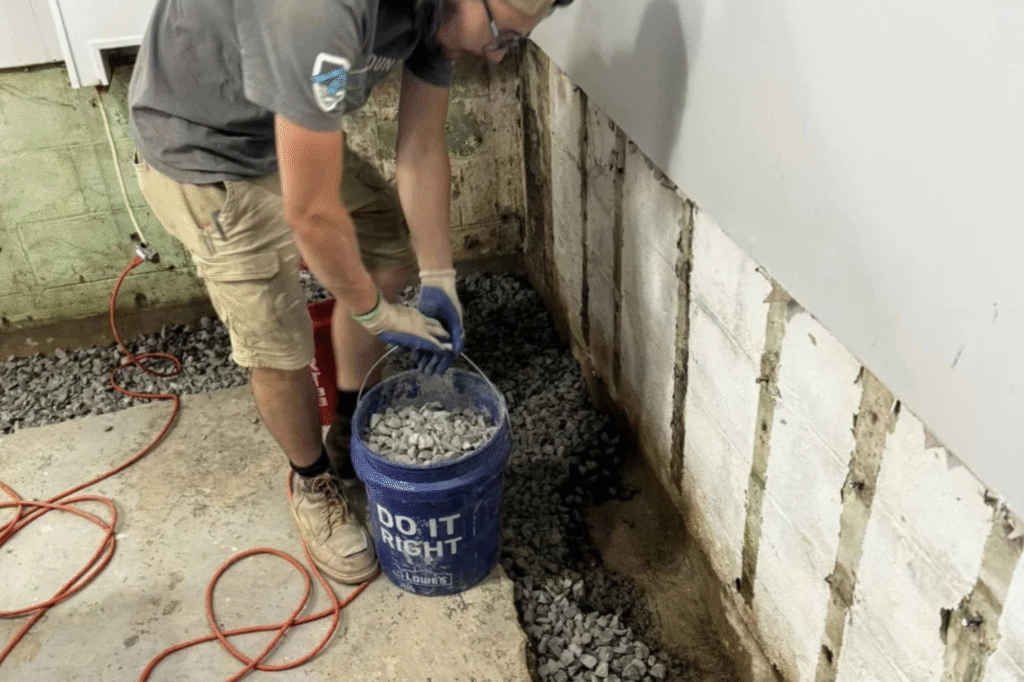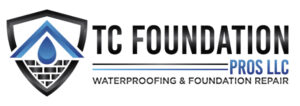Standing water in your yard could be due to a number of issues, such as poor drainage, clay-heavy soil, improper grading, or malfunctioning gutters. This stagnant water is not only harmful for your plants and landscape but can also pose significant health hazards, providing a breeding ground for mosquitoes and fostering mold growth. To fix this, multiple techniques can be employed, like improving soil conditions, optimizing landscape grading, or installing an efficient drainage system, such as French drain installation. By diving deeper, you would be able to better comprehend these potential solutions, their implementation, and the top preventive measures to keep standing water at bay.
Key Takeaways
- Standing water in yards can be caused by poor drainage, improper landscape grading, dysfunctional gutters, or compacted soil.
- It poses health risks by attracting mosquitoes and promoting mold growth, and can also damage home foundations and lower property value.
- Soil and landscape issues can be addressed by improving soil structure, leveling the yard, elevating garden beds, and building raised beds.
- Drainage solutions include installing systems like French drain installation, using dry wells, creating swales, and ensuring water isn’t diverted towards foundations.
- Preventive measures include maintaining a healthy lawn, landscaping with a slope away from the home, regularly cleaning gutters, and extending downspouts.
Understanding the Problem: Standing Water
One often encounters the issue of standing water in their yard without truly understanding the implications it carries. It’s more than just an unsightly nuisance; it’s a problem that can have significant consequences if not promptly addressed.
At its core, standing water is an indication of poor drainage. When water can’t flow away as it should, it pools on the surface, creating a soggy, waterlogged area. But it’s not just a matter of aesthetics or convenience. Standing water can also harm your yard’s ecosystem. It can drown plants, damaging their roots and inhibiting their growth. It’s also a breeding ground for mosquitoes, which can carry diseases.
Additionally, standing water can compromise the structural integrity of your house. Water that seeps into your home’s foundation can cause cracks, leading to costly repairs. It can also lead to mold and mildew, which can pose health risks to you and your family.
Identifying the Common Causes
While there are numerous factors that can contribute to standing water in your yard, understanding the most common causes can help you address the problem effectively.
The primary culprit is often poor drainage, which can result from a high water table or clay-heavy soil that doesn’t absorb water well. You’ll typically notice this issue after a heavy rain when water pools in certain areas and doesn’t dissipate quickly.
Another common cause is improper landscape grading. If your yard doesn’t have the right slope, water can accumulate instead of flowing away from your property. This issue is particularly prevalent in yards that have been recently landscaped or where soil has been displaced due to construction.
Similarly, gutters and downspouts that aren’t functioning properly can direct water towards your home instead of away from it, resulting in pooling. These systems need to be regularly inspected and cleaned to guarantee they’re working as they should.
Finally, compacted soil can also lead to standing water. When the soil in your yard is too compact, it can’t absorb water effectively, leading to runoff and pooling. Regular aeration can help alleviate this issue by loosening the soil and promoting better water absorption.
Health and Structural Risks
Despite its seemingly innocuous nature, standing water in your yard can pose significant health and structural risks. It’s a breeding ground for mosquitoes, which carry diseases like West Nile Virus and Zika. These pests thrive in stagnant water, and even a small amount can attract a large mosquito population.
Furthermore, standing water can also promote the growth of mold and mildew. These fungi produce spores that can potentially cause allergies or respiratory problems when inhaled. They’re not just a health risk, but also a nuisance as they can make an unpleasant, musty odor.
In addition to health risks, standing water can cause structural damage to your property. It can seep into foundations, causing them to crack or even collapse over time. This water can also damage your lawn and other plantings, potentially killing them and leading to costly replacements.
Moreover, standing water can also negatively impact your property’s value. Prospective buyers will be less likely to purchase a property with standing water issues, as it indicates potential structural problems and neglect. Therefore, it’s essential to address standing water promptly to mitigate these risks and keep your yard safe and healthy.

Addressing Soil and Landscape Issues
To effectively address standing water in your yard, you’ll need first to tackle soil and landscape issues. Compacted soil, clay soil, and landscape depressions can all contribute to water pooling. Let’s deal with these problems head-on.
Start by evaluating the soil’s condition. Compacted or clay soil doesn’t absorb water quickly, leading to accumulation. Consider incorporating organic matter like compost or manure to improve soil structure and enhance water absorption. Alternatively, you could replace the clay soil with a more permeable one.
Next, look at the landscape. Are there depressions where water gathers? You might need to level your yard or add topsoil to fill in these low spots. However, be mindful not to direct water towards your home’s foundation when leveling.
Don’t forget to assess your garden beds. They should be slightly elevated to prevent water from pooling and damaging your plants. If necessary, raise them or build raised beds for better water management.
Addressing soil and landscape issues might seem challenging, but it’s a necessary step in eliminating standing water. With these measures, you’re one step closer to a healthier, drier yard.
Implementing Drainage Solutions
Addressing soil and landscape issues is just the beginning. Now, let’s talk about implementing drainage solutions. Should your yard’s standing water problem persist, consider installing a drainage system. A French drain, for instance, is a trench filled with gravel or rock containing a perforated pipe that redirects surface water away from your property.
If you’re dealing with smaller areas of water accumulation, dry wells might be your ticket. They’re fundamentally holes filled with gravel that collect runoff water, slowly dispersing it into the ground.
For yards with slope issues, a swale, which is a shallow, wide depression in the ground, can guide water to a specific area, such as a drain or a street.
Remember, though, that these solutions require careful planning and execution. You don’t want to inadvertently divert water towards your home’s foundation or a neighbor’s property. It’s vital to understand the local codes and regulations before you start digging.
In some cases, you might need to secure permits or hire a professional to guarantee the job’s done right. Pittsburgh French drains installation specialists can help ensure the system is installed effectively to prevent water from pooling.
Preventive Measures for Future Prevention
While you’re tackling the existing standing water issue, it’s equally essential to take preventive measures to avoid future water accumulation. Consider the following strategies to keep your yard dry and healthy.
Firstly, maintain a healthy lawn. A well-kept yard absorbs water better, reducing the risk of puddling. Regularly aerate your lawn to improve water permeation.
In addition, consider landscaping strategically. Sloping your yard away from your home can guide water towards the street, a drain, or a low-lying area.
Next, keep your gutters and downspouts clean. Clogged gutters can overflow, causing water to pool around your house. Extend your downspouts to direct water farther from your home.
Lastly, install a rain garden or a French drain. These features can be visually appealing and functionally effective in managing excess water.
In Summary
To sum up, standing water in your yard isn’t just an eyesore; it’s a potential health hazard and structural risk. Addressing the root cause, whether it’s soil or landscape issues, can help resolve the problem. Implementing drainage solutions, including French drain services from TC Foundation Pros LLC, will effectively manage water flow, while preventive measures will keep your yard dry in the future. Remember, being proactive is the key to maintaining a healthy, beautiful yard.
